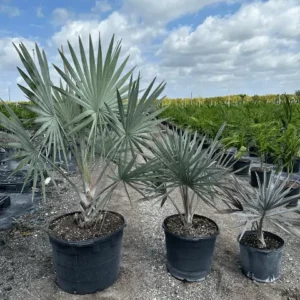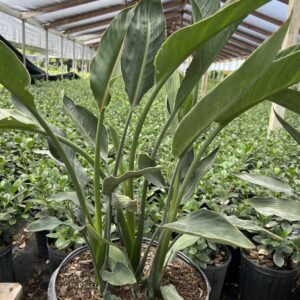
Pensacola Seeds
Pensacola bahiagrass (Paspalum notatum ‘Pensacola’) is a warm-season perennial grass ideal for lawns, pastures, and erosion control in the southeastern U.S. It thrives in warm, humid climates and is best suited for USDA Hardiness Zones 7 to 11. Plant seeds in late spring to early summer in well-drained soils with a pH of 5.5 to 6.5. It requires minimal maintenance, with good drought and pest resistance. Regular watering during establishment, periodic fertilization, and mowing to 2-4 inches will ensure a healthy lawn. Its deep roots make it excellent for erosion control and durable under heavy traffic.
$505.24
Related products
-
All Products
Bismarck Palm
$181.09 – $316.91 This product has multiple variants. The options may be chosen on the product page -
All Products
Bird of Paradise Orange
$45.27 – $236.25 This product has multiple variants. The options may be chosen on the product page
Pensacola bahiagrass (Paspalum notatum ‘Pensacola’) is a warm-season perennial grass that is commonly used for lawns, pastures, and erosion control in the southeastern United States. Here’s detailed information about growing Pensacola bahiagrass:
Growing Pensacola Bahiagrass
Seed Selection and Preparation:
Seed Quality: Purchase high-quality seeds from a reputable supplier to ensure good germination rates.
Seed Preparation: Bahiagrass seeds have a hard seed coat, so scarification (mechanical scratching) can improve germination.
Planting:
Timing: Plant seeds in late spring to early summer when soil temperatures are consistently warm (above 65°F).
Seed Rate: For lawns, use about 5 to 10 pounds of seed per 1,000 square feet. For pastures, 20 to 30 pounds per acre is typical.
Depth: Sow seeds at a depth of 1/4 to 1/2 inch.
Method: Seeds can be broadcasted or drilled into the soil. Ensure good seed-to-soil contact by lightly raking or rolling after seeding.
Soil and Site Preparation:
Soil Type: Bahiagrass prefers well-drained sandy soils but can tolerate a range of soil types.
pH Level: The ideal soil pH is between 5.5 and 6.5.
Preparation: Clear the area of weeds and debris, and till the soil to a fine texture.
Climate and Hardiness
Climate:
Pensacola bahiagrass thrives in warm, humid climates.
It is well-suited to regions with hot summers and mild winters.
It has good drought tolerance once established but benefits from regular watering during dry periods.
Hardiness Zone:
USDA Hardiness Zones 7 to 11 are ideal for Pensacola bahiagrass.
It can survive short periods of frost but performs best in frost-free areas.
Maintenance and Care
Watering:
During establishment, keep the soil consistently moist.
Once established, water deeply but infrequently to encourage deep root growth.
Fertilization:
Apply a balanced fertilizer at planting time.
Follow up with periodic applications of nitrogen-rich fertilizer during the growing season to promote lush growth.
Mowing:
Maintain at a height of 2 to 4 inches for lawns.
Mowing helps control weeds and encourages dense turf growth.
Weed Control:
Use pre-emergent herbicides to prevent weed seeds from germinating.
Hand-pulling or spot treatments with post-emergent herbicides can control established weeds.
Additional Information
Pest and Disease Resistance: Pensacola bahiagrass is generally resistant to pests and diseases, making it a low-maintenance choice.
Erosion Control: Its deep, extensive root system makes it excellent for erosion control on slopes and embankments.
Environmental Tolerance: It is tolerant of poor soil conditions, heat, and drought, making it suitable for challenging growing environments.
Benefits
Low Maintenance: Once established, it requires minimal care compared to other turfgrasses.
Durability: It withstands heavy traffic and grazing, making it suitable for lawns, pastures, and recreational areas.
Ecological Value: Provides habitat and food for wildlife, including pollinators and grazing animals.
Pensacola bahiagrass is a versatile and resilient grass that offers numerous benefits for a variety of applications. With proper establishment and care, it can create a durable and attractive landscape.
| lb | 50lbs |
|---|


